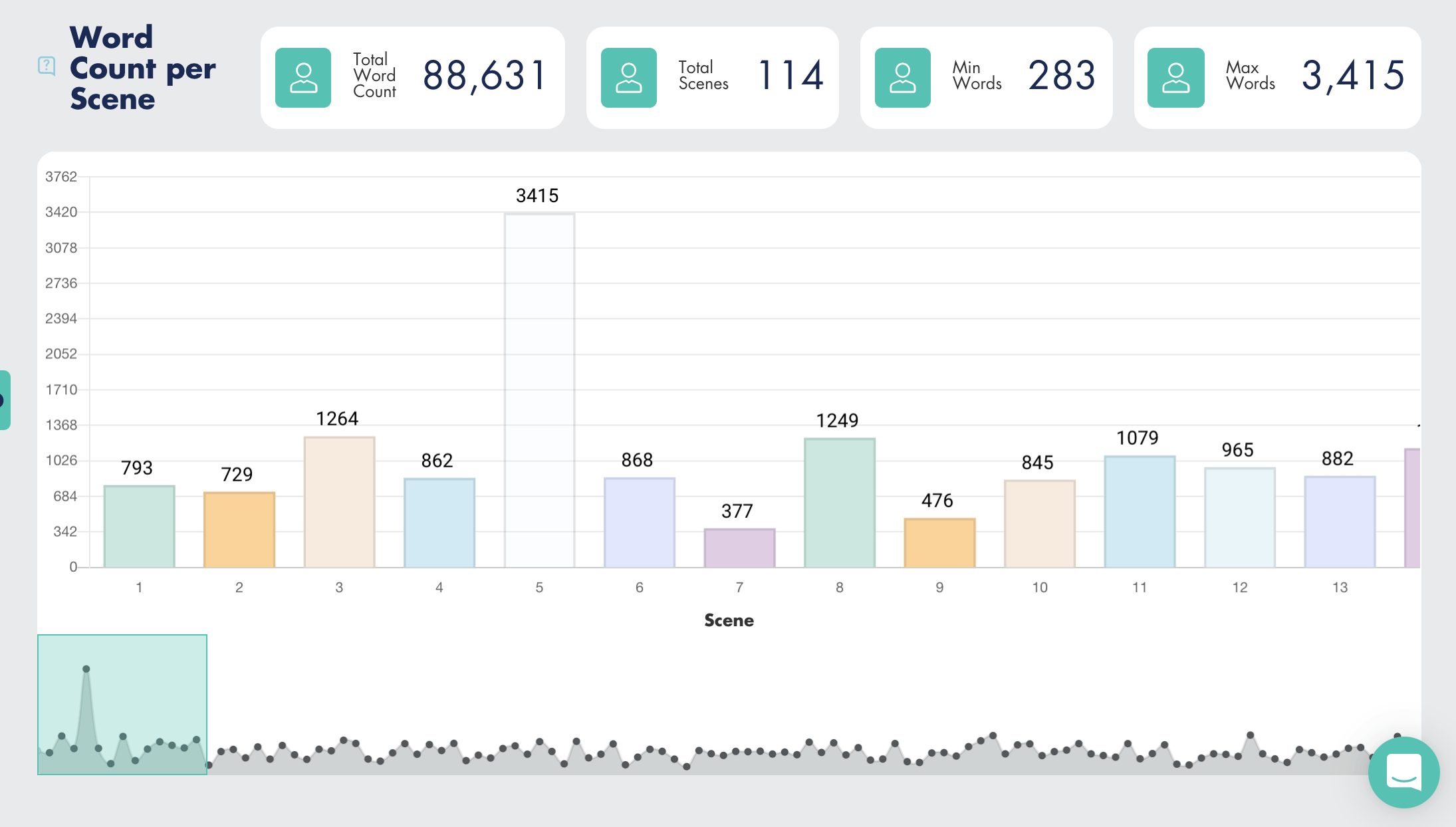As a writer, you’ve probably read there are recommended lengths for a manuscript depending on the genre you write in. We’ve done some research and thought we’d share that with you.
Popular Genre Word Count Expectations
In order of length, word count guidelines for a few of the popular genres are:
- Novellas: 20,000 to 30,000
- Middle Grade: 25,000 to 40,000
- Romance: 40,000 to 100,000
- Young Adult: 50,000 to 80,000
- Mysteries, thrillers, and suspense: 70,000 to 100,000
- Paranormal: 75,000 to 95,000
- Fantasy: 90,000 to 100,000
- Horror: 80,000 to 100,000
- Science Fiction: 95,000 to 125,000
- Historical: 100,000 to 120,000
Genre length may vary with different publishers, so check submission guidelines carefully. If you’re self-publishing, readers of the genres have come to expect a certain word count, and you don’t want to disappoint them, so think about the word count and make a conscious decision on the length of your novel.
But what about word count per scene?
When you’re about to begin a story edit, you may wonder if counting the number of words per scene is important. We think it is, and we’ll tell you why.
Scene Emphasis
After you’re happy with the total word count for your novel, it’s time to evaluate how your word count is spread across your scenes.
By counting the words in each scene, you can see where you are putting emphasis and where you are not. Without knowing the specific word count, you don’t have a method to know if a critical scene is too short or a minor scene is too long.
Tips to Improve Word Count Structure
StoryTeller draws the Word Count per Scene within seconds of importing your manuscript. Look for the longest scenes. Are they the inciting incident, plot point 1, middle, plot point 2, or the climax. If not, you’ve given more weight to a scene that is not one of the most important scenes and the story will feel unbalanced. Consider shortening those scenes.
Check for scenes over three-thousand words. This is heading into short story territory. For these scenes, look for places where you could put a scene break character. These include a change in point of view, a change in location, or a change in time.
Patterns
Some authors like to write scenes of the same length for the entire novel. Others vary the scene word count. The choice is yours, and you can use it to your advantage if you evaluate the Word Count per Scene from a big-picture view.
If you follow a pattern (same word count per scene) throughout your novel and one scene is way longer than the rest of your scenes, make sure this is the climax scene. If it’s not, you probably have too many words in the scene.
Look for multiple long scenes in a row. When you read these scenes, does the pacing feel slow? If it does, consider shorting those scenes or splitting them into more than one scene.
If you want to pick up the pacing leading to the climax scene, see if you can use shorter scenes immediately before the climax. This will give the reader the impression of movement and the pacing will be faster.
How I Used Word Count To Improve My Novel
You can see in the Word Count Per Scene graph below, that scene 5 is over 3000 words long. The other scenes in the novel are all under 1800 words. I discovered this during my story edit of DESCENT (my first novel).

This was a scene early in the novel where my main protagonist, Kalin Thompson, moves to Stone Mountain Resort. In great detail, the scene described Kalin moving into her new apartment. After I looked at the word count, I realized I’d written the scene to give the reader a feel for resort life. Nothing much happened in the scene to move the plot forward.
I knew I needed to fix this. Instead of putting the details in one scene, I cut the scene and sprinkled the details throughout the other scenes.
This improved the story by eliminating an info dump but still leaving in details that showed the reader what it’s like to move to a ski resort. If I hadn’t reviewed the word count of the scene in the context of the other scenes, I might have missed this.
![]()
How Fictionary StoryTeller Will Help
Depending on the software you use to write your novel, counting the words in each scene can be a time-consuming exercise.
For example: In Microsoft word, you’ll highlight each scene and look at the word count displayed at the bottom of each page. In Scrivener, it’s a little easier. The word count is displayed at the bottom of each screen if you’ve broken your text into scenes as you write. In either case, you’ll have to keep track of the word count and evaluate it from a manuscript level.
Fictionary will automatically break your novel into scenes and create a report showing you how many words are in each scene. You’ll be shown a graph, and can easily see where you need to focus on word count. Word count is one of thirteen Fictionary Insights used to help you perform your own big-picture edit.
Don’t know if it’s time to revise your novel? Check out When to Self-Edit in Your Writing Journey
If you’d like to listen to an in-depth discussion on story editing, check out Story Edit Like A Pro.
StoryTeller is creative editing software for fiction writers. Transform your story, not just your words. Successful stories depend on your ability to edit, improve, and revise your work. Only when you master story editing, can you master storytelling.
Why not check out Fictionary’s StoryTeller free 7-day trial and tell powerful stories?

